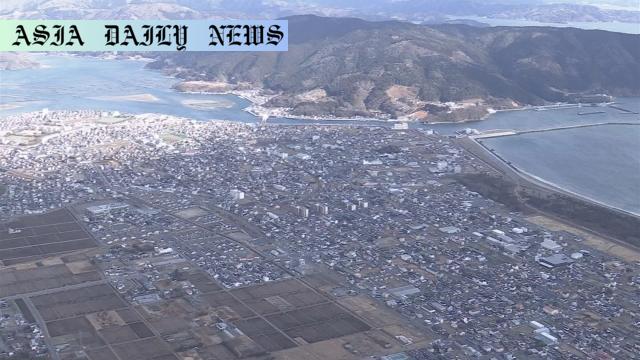Relocation has alleviated tsunami fears for 84% of residents, but aging neighborhoods remain a prevalent and growing concern.

Introduction to the NHK Survey and 2011 Disaster Relocations
In the aftermath of the devastating March 2011 earthquake, tsunami, and subsequent nuclear disaster in Japan, the government undertook a significant effort to relocate affected households. New residential areas were constructed in 324 districts, primarily across Iwate, Miyagi, and Fukushima prefectures. These new districts were situated on higher ground as a safeguard against future natural disasters, providing residents with much-needed security and a sense of safety. However, a recent NHK survey sheds light on the long-term consequences of these relocations, especially the aging population and strained community interactions.
Unexpected Challenges in Rebuilt Communities
While 84% of respondents expressed relief at living without fear of tsunamis, many also highlighted challenges that have emerged post-relocation. One key issue is the aging demographic in these rebuilt neighborhoods. Over 80% of respondents across all district sizes conveyed anxiety about their communities’ ability to sustain themselves, both socially and economically, due to the graying population. This concern is compounded by the limited availability of volunteers for critical roles, including welfare workers and firefighters. Alarmingly, districts with 31 or more households reported a volunteer shortage of 45%, while smaller communities of 10 to 30 households showed similar struggles, with around 50% reporting difficulties in finding willing participants.
Insights into Community Interactions
Community interactions, or the lack thereof, also emerged as a significant theme in the survey results. Smaller districts, with households ranging from 11 to 30, reported a higher rate of neighborly interactions at 72%. By contrast, larger districts with 31 or more households revealed a notably lower interaction rate of just 35%. These findings suggest that smaller communities foster stronger interpersonal relationships, which can be instrumental in addressing shared challenges. However, the survey points out that even these close-knit communities are not immune to the overarching issues of aging and labor shortages.
Future Implications and Solutions
As Japan grapples with an aging population on a national level, the situation in these disaster-relocated communities mirrors broader societal challenges. The limited pool of young residents willing or able to take on essential roles such as welfare support and firefighting presents an urgent need for solutions. Potential interventions include developing programs to attract younger families to these districts or implementing technology-driven solutions to assist aging residents. Encouraging greater interaction within larger communities may also help bridge some gaps, fostering a more cohesive and supportive environment.
Conclusion: Balancing Safety with Sustainability
The relocation effort following the 2011 disaster was an essential step in safeguarding lives and communities. While it has succeeded in alleviating fears of another tsunami, it has also brought to light deeper issues that threaten the long-term sustainability of these neighborhoods. Addressing the aging population, fostering stronger community bonds, and encouraging civic engagement will be critical to ensuring that these relocated districts can thrive in the future, even amidst ongoing demographic and social shifts. Policymakers, community leaders, and residents must work collaboratively to overcome these challenges, ensuring a brighter and more secure future for all.
Commentary
The Importance of Addressing Relocation Challenges
The NHK survey brings to light a pressing issue that many might overlook when considering the aftermath of a natural disaster: the long-term impact of relocation on community dynamics and demography. While ensuring safety from natural calamities is undoubtedly a priority, the findings underline that relocation goes beyond just physical safety. The aging population in these districts poses a significant challenge, not just for the residents themselves but for the future viability of these communities. As an observer, I’m struck by the delicate balance between short-term safety and long-term sustainability.
Role of Community Interactions in Building Resilience
One of the most enlightening aspects of the survey is the correlation between community size and interaction. Smaller communities appear to enjoy better communication and stronger interpersonal bonds. This speaks to the importance of fostering neighborly interactions as a way to build resilience, especially in the wake of disaster. Larger districts may need to prioritize community-building initiatives to emulate the connectedness observed in smaller locales. This could involve creating shared spaces or organizing local events to bring residents together.
The Path Forward: Collaboration and Innovation
A collaborative, multi-faceted approach is crucial to address the concerns highlighted in the NHK survey. Policymakers must explore incentives to attract younger families to these districts, perhaps by offering economic benefits or creating employment opportunities. Additionally, technology can play a role in addressing the challenges of an aging population. For example, deploying robots or AI-powered solutions for daily support could help alleviate some of the burdens on elderly residents. At its heart, this issue is not merely about recovering from a past disaster but about preparing for a sustainable and equitable future. Together, communities can thrive despite these challenges, provided they embrace innovative solutions and collective action.


